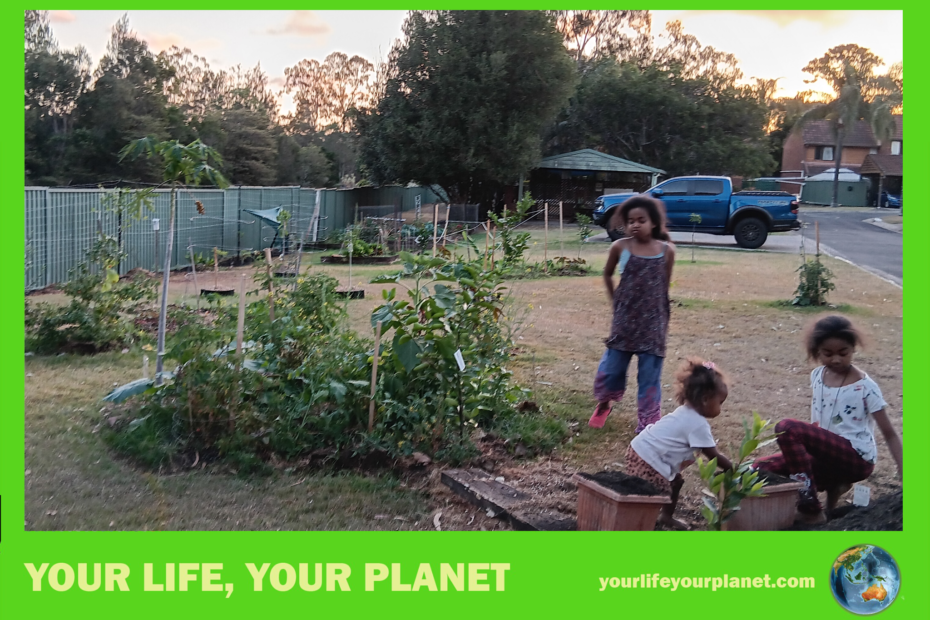Sounds like a dream, but no dig gardening is possible without much fuss at all. We call it … Don’t give a fig gardening
Tip 86 in Your Life Your Planet, Getting fed without giving a fig, is all about different approaches to getting food without a horticulture degree or a whole lot of digging big holes. As always, the trick is to work with nature instead of trying to dominate her.
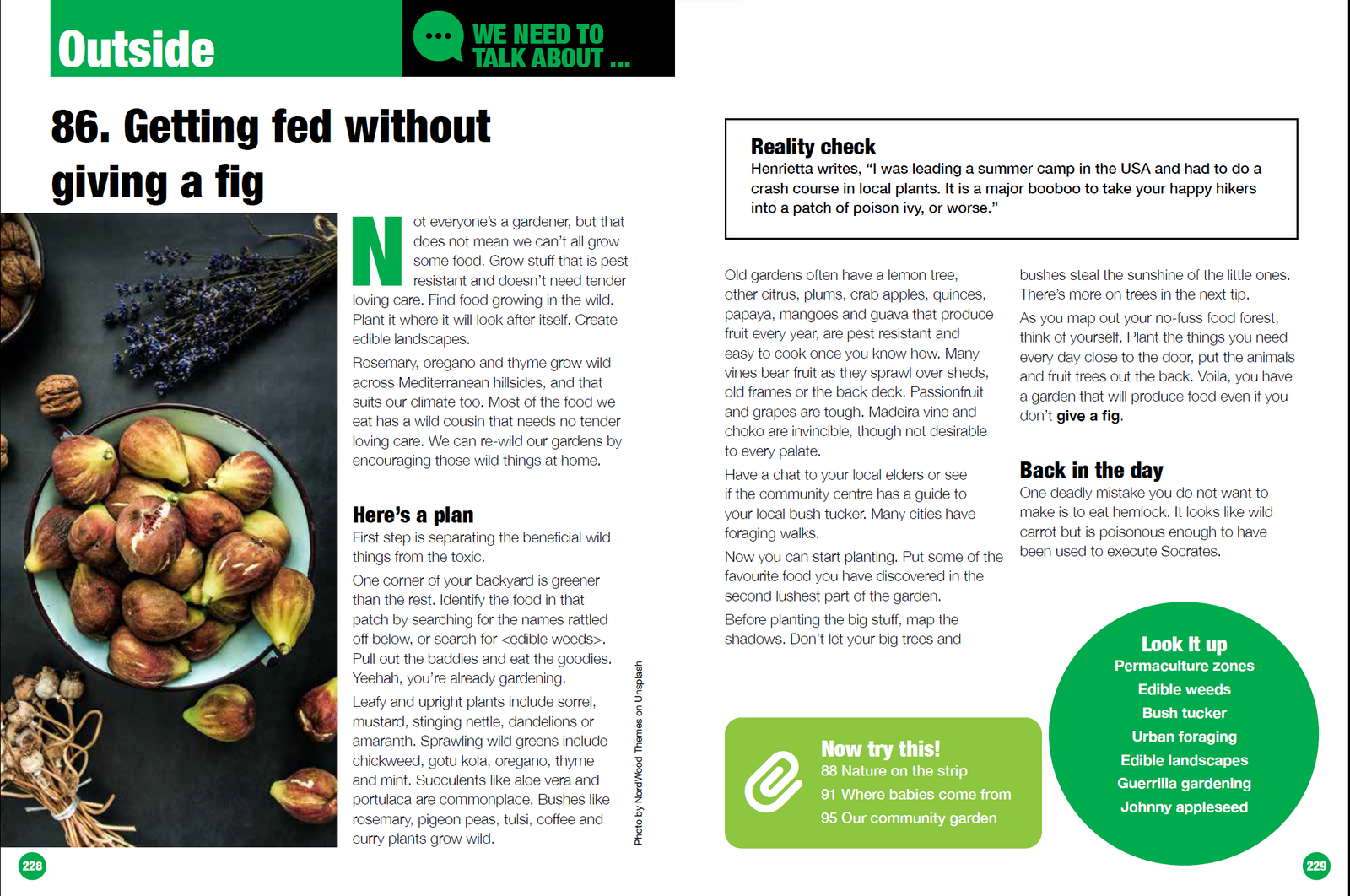
In the book, Tip 86 starts by identifying the greenest spot in the back yard where the weeds grow fastest and are green even after a hot day. That’s a really good spot to grow stuff. Last week we talked about planting in clumps so that your plants support each other and you get more food for every little bit of work you do. That’s also a good idea.
This week, we’re going to show you how we are converting an open lawn into a food forest, using the grass as our secret weapon. We do start in the greenest spot and we do grow as much stuff as we can in the smallest space to clump stuff up and so we can pick and choose what we want most. We’ll show you the nearly-no-dig method (which is really save-the-digging-until-its-easy method) and the dig-a-little-bit method (which is designed to stop all your water and nutrients running down the hill and into the neighbour’s – or the local creek – YIKES!).
We’re using grass as our secret weapon because we have lots of it, it’s organic, and organic matter is what you need to build good soil. The lawnmower man was paying to take the grass away and dump it and we said, leave it with us and use the time and money that you save to help us keep the garden tidy. He was a bit grumpy because its harder to mow around garden beds and fruit trees than it is to mow an open paddock. He thought that was a fair trade and we ended up with lots and lots of grass clippings. We are talking about five or six barrows a fortnight!
The problem with grass clippings is that they are full of cellulose and don’t rot down very easily. Also, they form a dense mat and don’t let much water through, so they get a bad reputation as mulch. And there’s more: a lot of gardeners don’t like them because grasses like couch, buffalo and kikuyu will grow from a little bit of stem and can easily take over the garden. They ask “Why spread a weed around if you don’t have to?”
Well, I say, if you have lots of money and like throwing away good organic matter that will break down into methane and cause global overheating and climate chaos, then throw your grass clippings away and pay for mulch and compost. If you want to save money and convert your lawn into a food forest for nothing, keep reading.
First, we split the load of grass clippings in half. One half we spread out thickly on the ground to kill the grass so it was not such a problem when we planted. The other half we piled up near the compost bins and used to mix up with all the food scraps and keep the compost sweet and aerated. When the first lot of compost was ready, we plonked it down on top of some of the grass clippings out on the garden beds and started planting into it. There were a few steps in this last process that I will spell out now, with pictures.
- We watered a lot.
- We raked the grass clippings back and watered the ground.
- We dug a few holes were we wanted trees or big plants in the garden/
- We filled the holes with water.
- We planted big plants in the holes.
- We spread the grass clippings out (a bit more thinly than before) and we watered them some more.
- We spread compost over the top and watered some more.
- We threw seed of plants we wanted to grow around.
- We spread grass clippings around the big plants as mulch.
- We watered and watched and waited
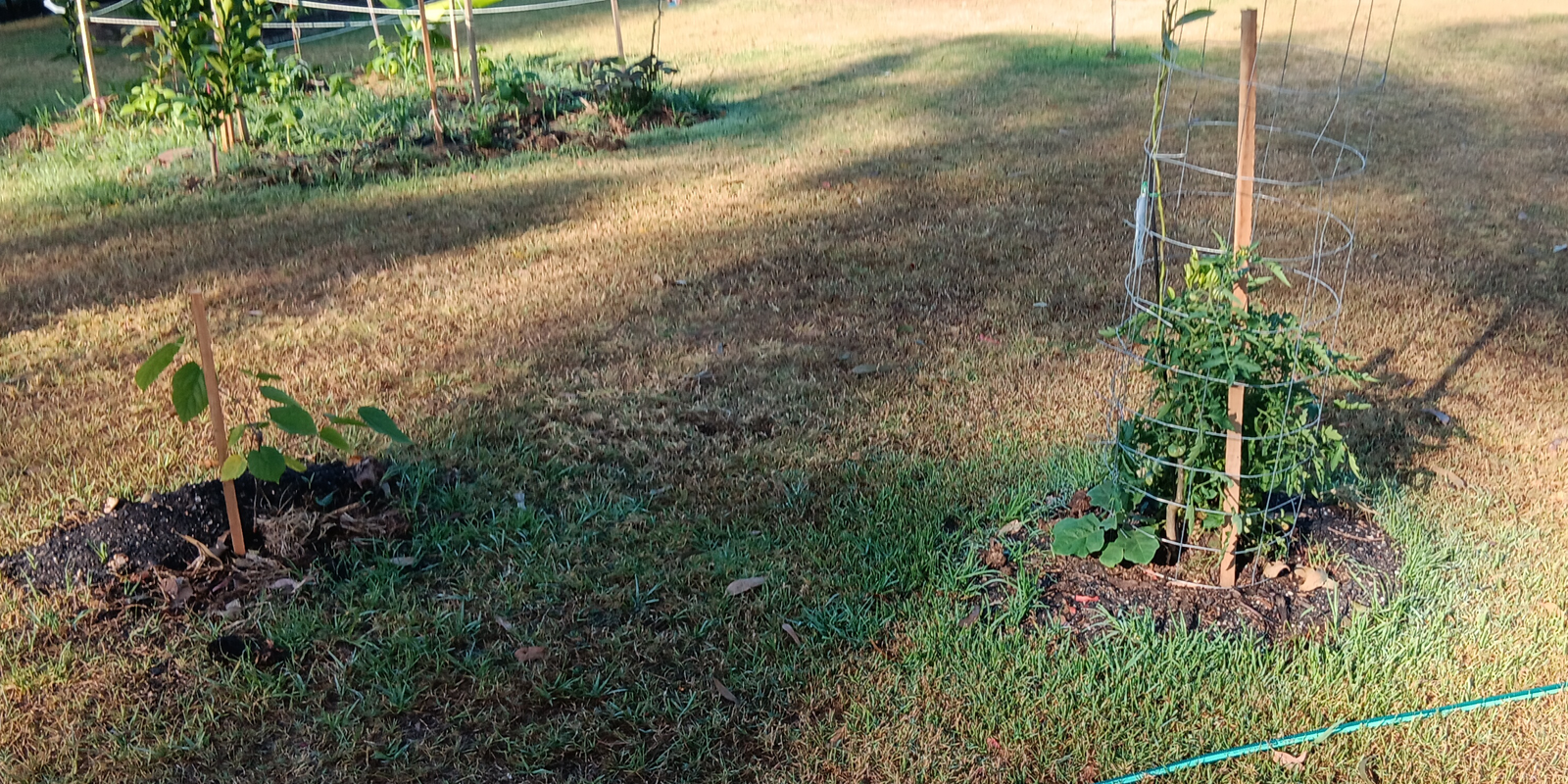

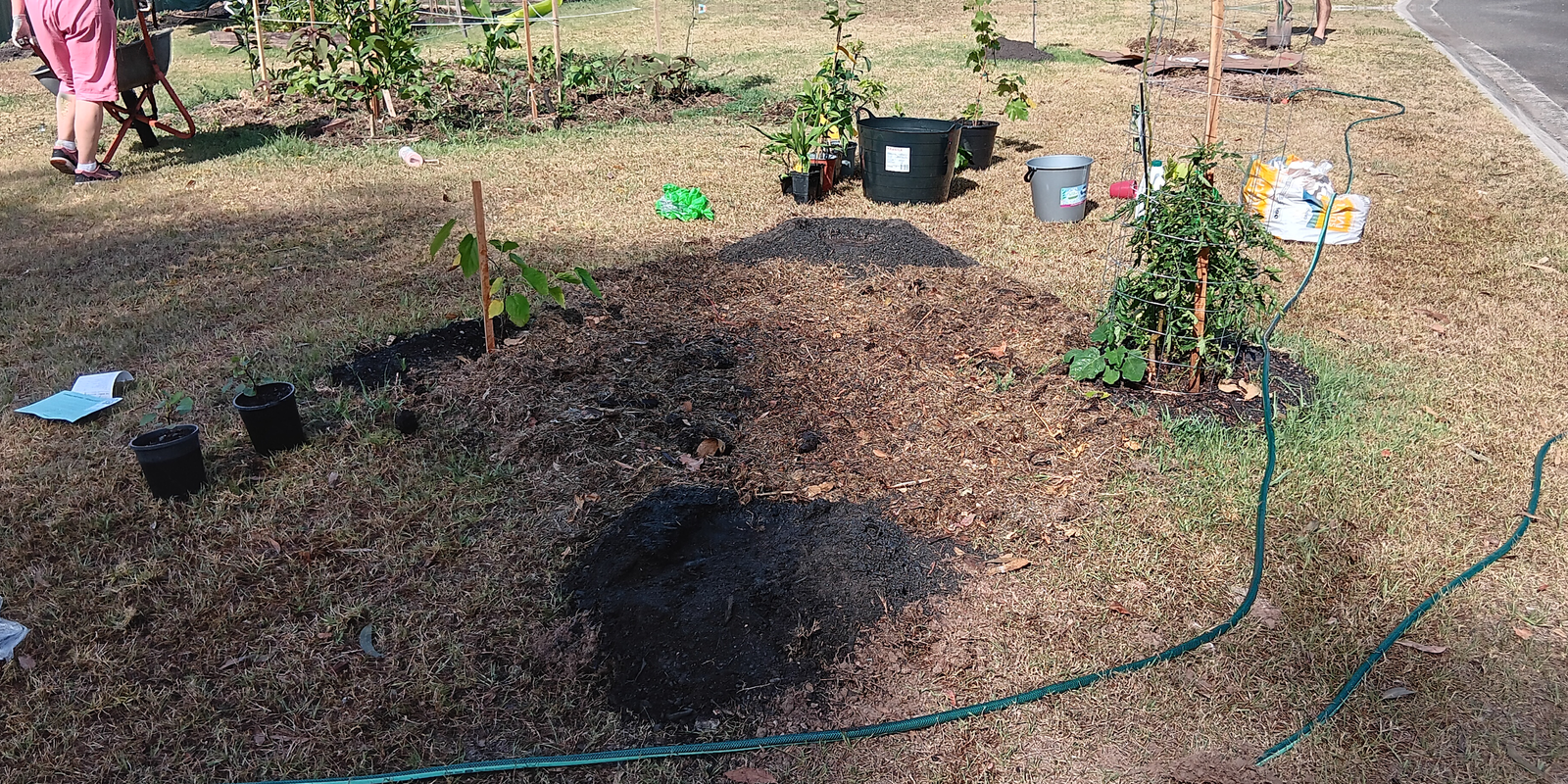
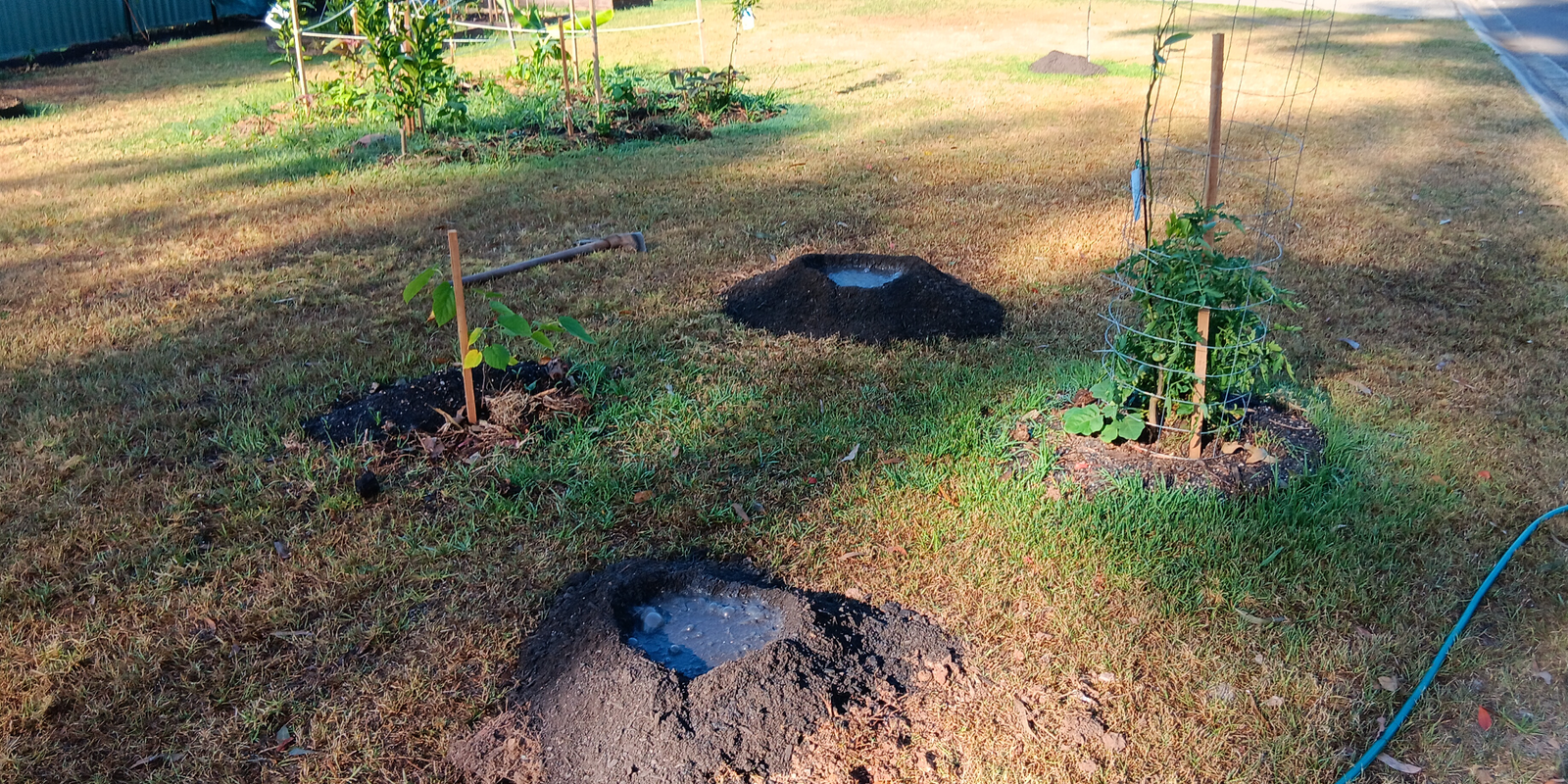


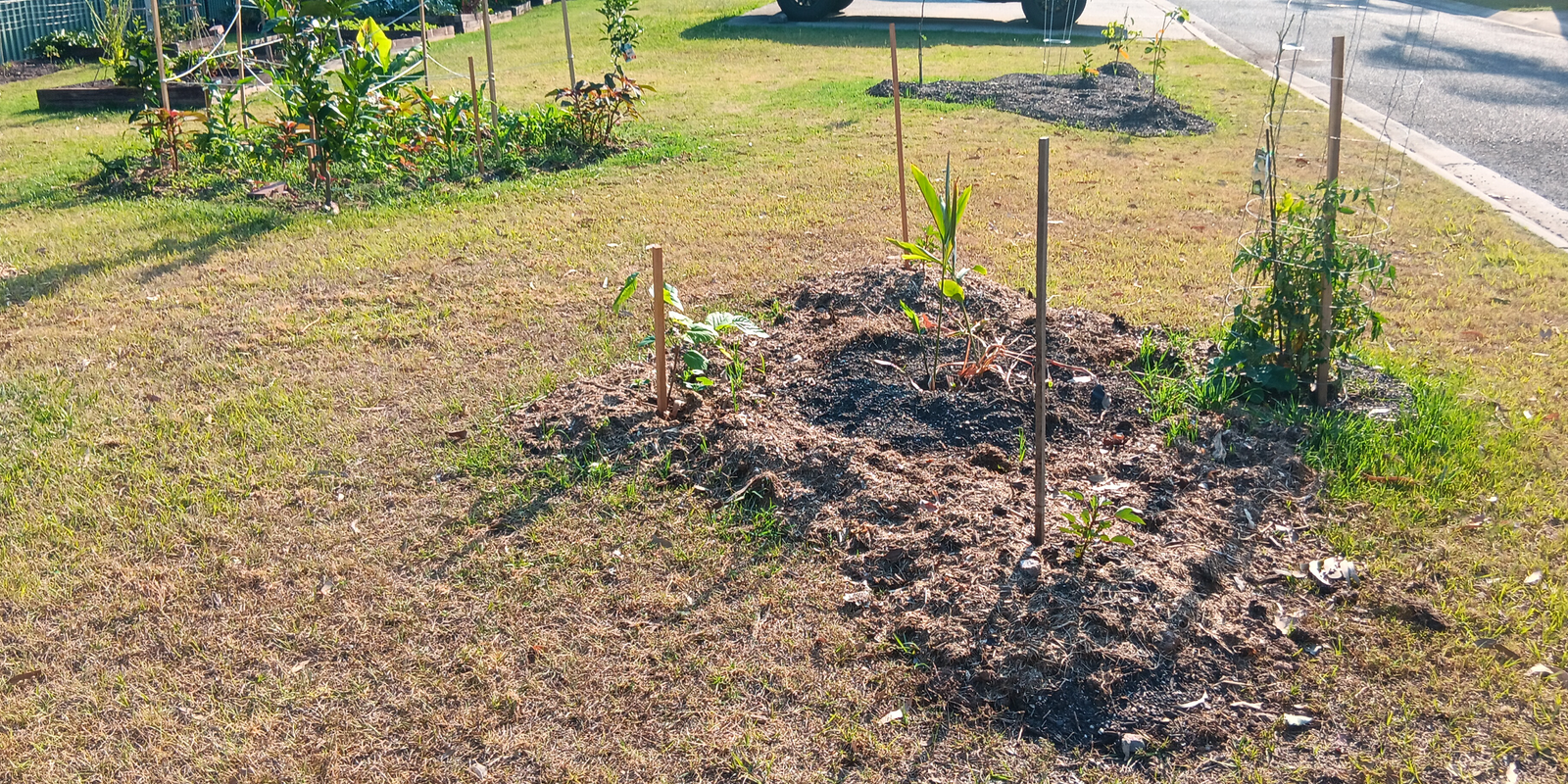
Look at what happened! The amaranth, pumpkins and tomatoes have come up out of the compost. The sunflowers, beans and corn have come up from the seed we threw around, the corn, beans and trees are the things we deliberately planted.
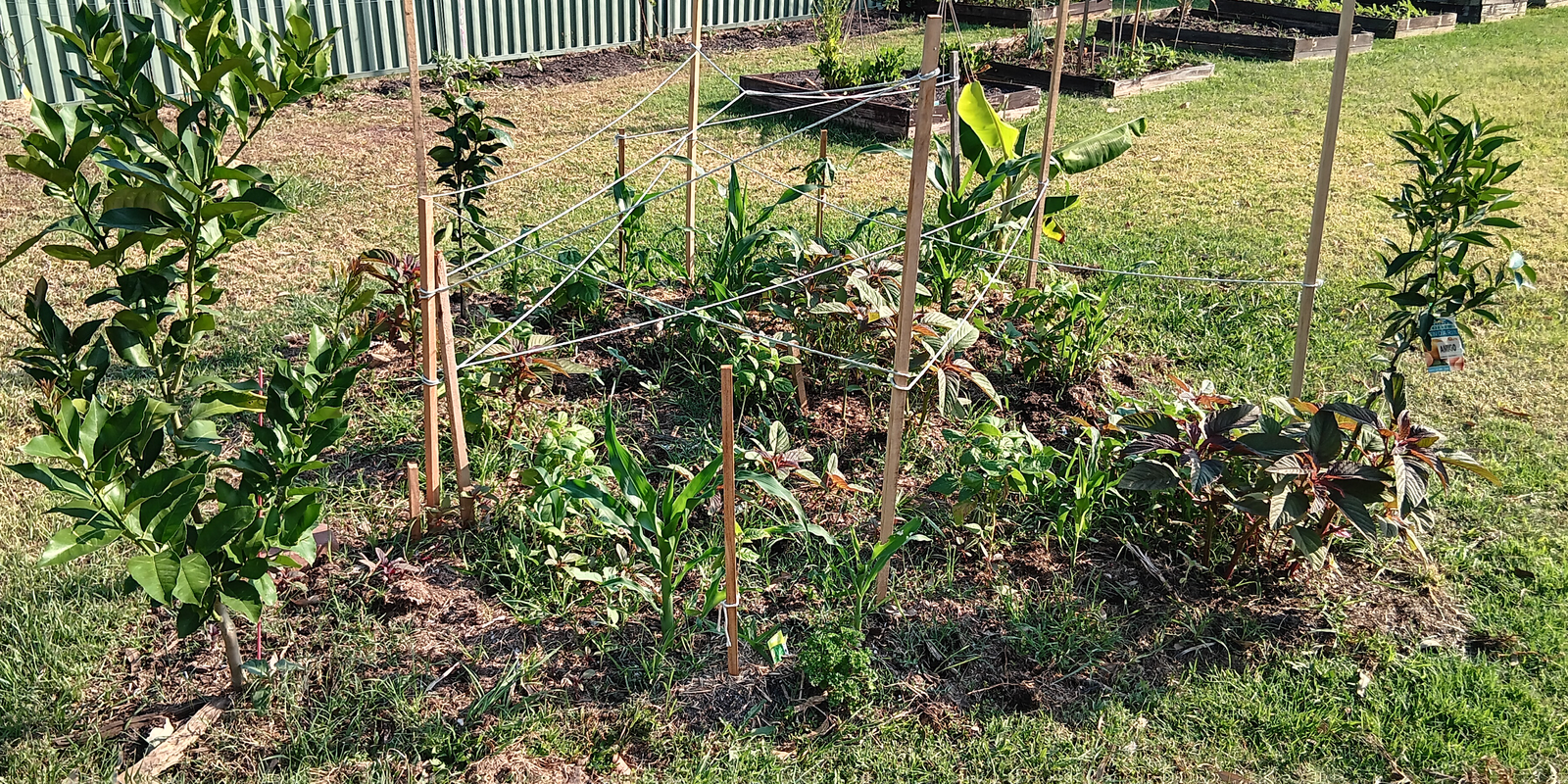
So. It’s not completely no dig, but its close. If we weren’t planting established trees, there would be no reason to dig at all. The reason I called it Dig-when-its-easy is that the grass from the lawn, will eventually come through the clippings compost and mulch and threaten to take over the garden. By then, though, your garden is established, the soil is soft and it is incredibly easy to dig the grass out with a shovel, even a hand one in some cases.
Some people put down weed mat, cardboard or plastic to keep the grass down, I don’t bother. The grass will eventually come through anyway, and it’s easier to weed without all that stuff in the way. I feel the same about the grass that grows from the top when you use grass clippings as mulch. There are only a few strands, you can pick them out by hand as they appear and you have a no-cost, no waste mulch that was grown where you are standing!
Now, that worked on the flatter parts of the orchard. We needed to use a different approach along the bottom fence line, where we planned to grow vines like grapes and passionfruit, with tomatoes beans, cucumbers, and other clambering vines. Here the soil was rock hard, full of old building material and all the water and compost was washing away under the fence.
We started off the same way, putting barrow loads of grass where we wanted to build the garden bed. After three to six months, we …
- pulled all the grass back
- dug a ditch where the lawn had died, piling up all the dirt and building rubble on the down hill side
- filled the ditch with water
- filled the wet ditch with compost and imported soil
- planted
- dragged the grass back as mulch.
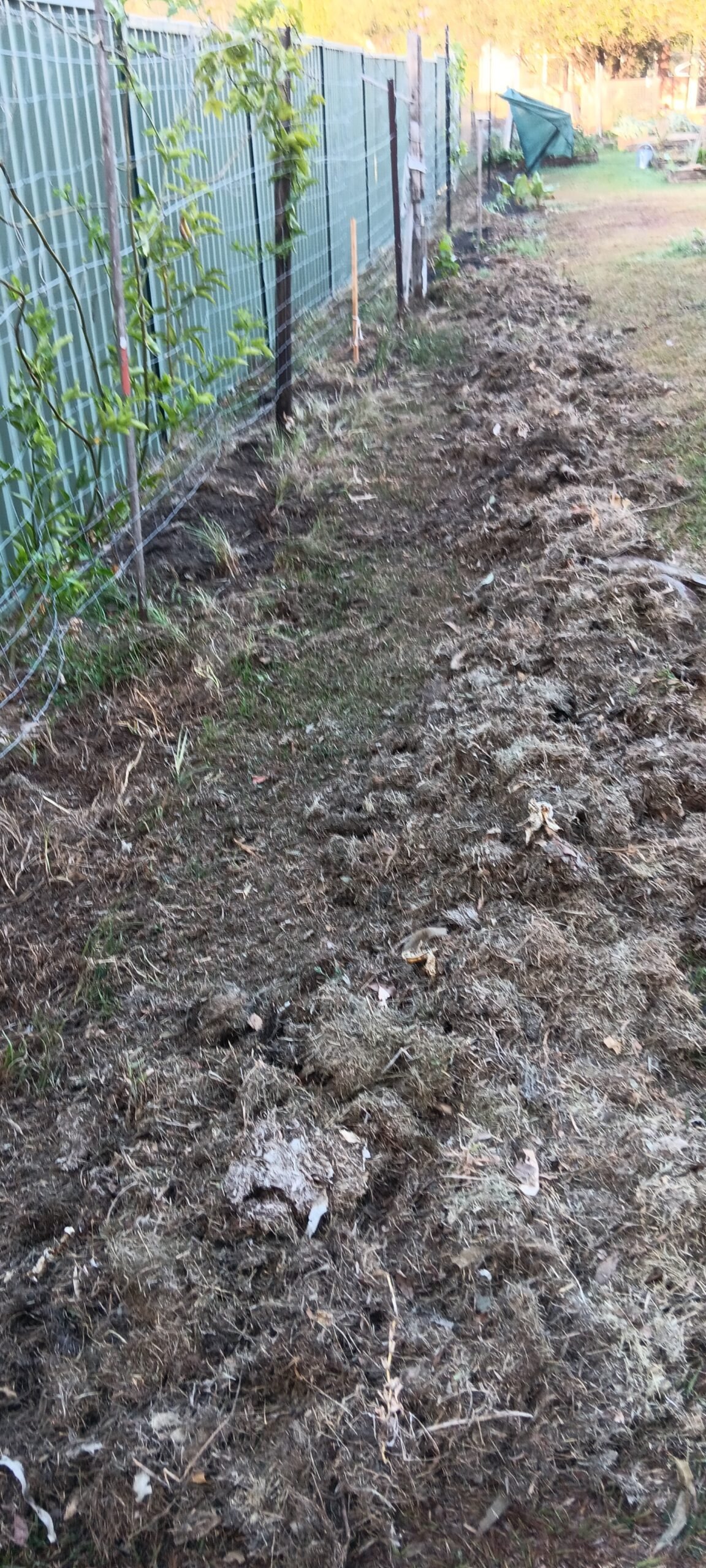
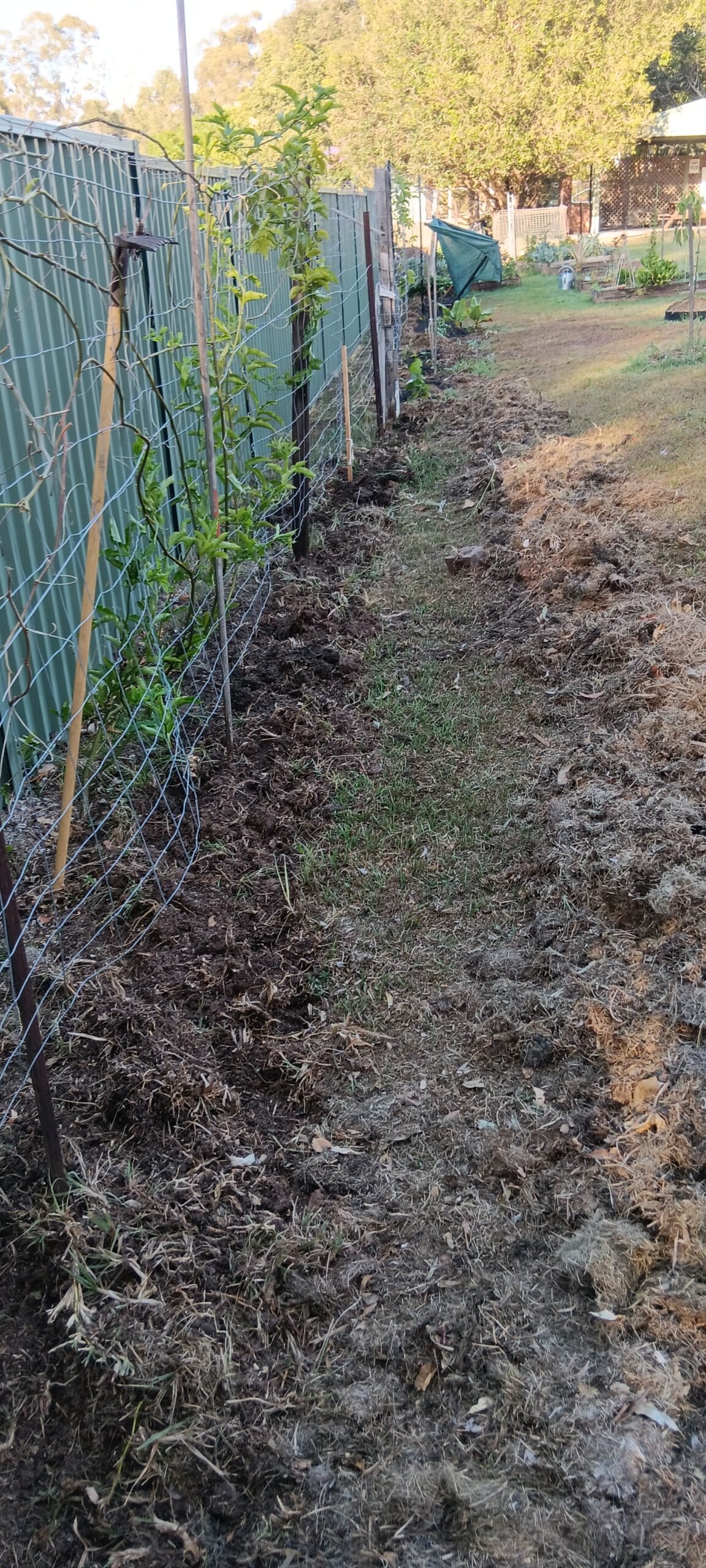


Again, it’s not a completely no dig solution but it uses mostly local ingredients and a minimum amount of work to create an excellent water and nutrient barrier to keep all the goodies on your property where your garden can use them instead of sending them off into the environment where they might be polluting the local creek.
Your situation might call for a variation on this theme. The idea is to use the materials at hand as effectively as possible to get the most food for the minimum work and purchased resources.
